I love visiting national parks across the United States. There is so much beauty and so much diversity that I’ve made it a goal to visit all 63 National Parks in my lifetime. While it seems easy at first glance, planning a budget trip in the United States is tough. Planning a budget trip to United States’ National Parks is even tougher. So in this post, I’m going to give you my tips and tricks for enjoying the National Parks on a budget.
Now, full disclosure, you could go full budget mode and camp, but that’s not what I do. This will focus on budget advice for the average traveler and will pack in plenty of real life examples.
Planning Your Trip
Let’s start out in the planning phase of your trip. Where are you going to visit? There’s 63 parks across the United States and they vary widely. As easy as it is to say that you want to visit Yosemite National Park for it’s amazing scenery, know that if you’re traveling on a budget, that’s going to be more difficult. So, let’s get into it.
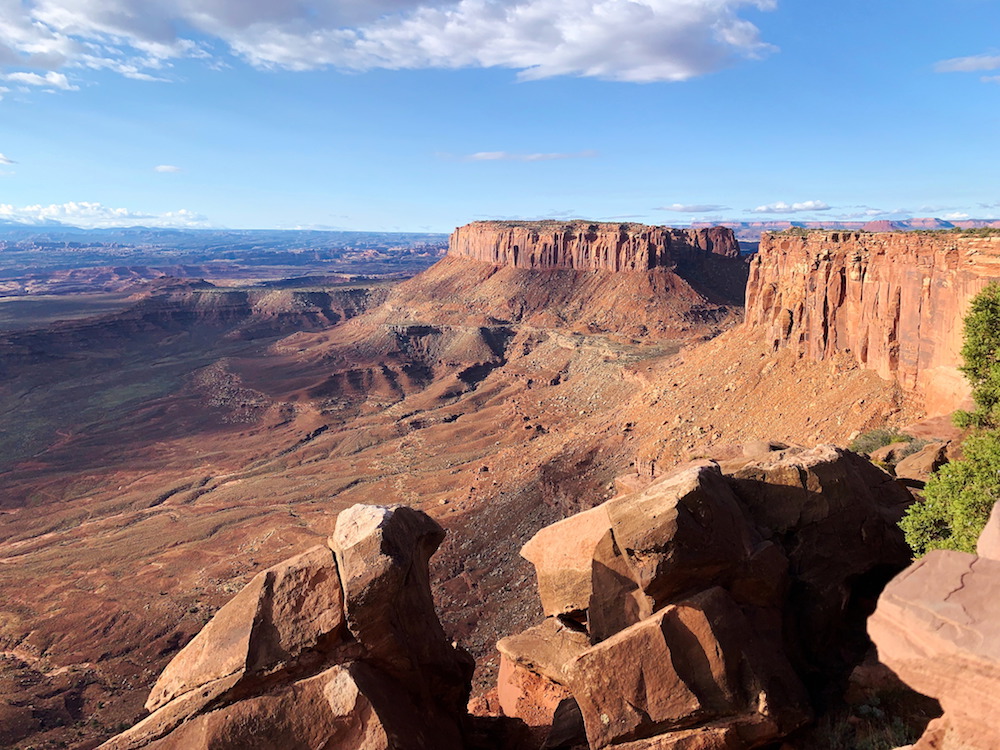
Be Selective of Your National Parks
There’s 63 national parks and some are more expensive to visit that others. That’s just a fact. The remote parks in Alaska cost more to visit than the lakeshores of the Midwest and while there are some tricks that you can do, some parks will just be expensive to visit. But, not every national park needs to be expensive.
Look for national parks in cheaper areas. Alaska can be expensive, but New River Gorge in West Virginia is significantly more affordable. That’s not to say that you shouldn’t visit the expensive parks, but rather that if you have flexibility, you can find more budget options at other parks.
Based on my experience, here’s some national parks that I found to be on the more affordable, even cheaper end of the scale. This is solely based on your fees for accommodation, food, and experiences at the parks. It does not take into account flights, rental cars, and other transportation as that varies dramatically by traveler.
- Mammoth Cave National Park
- Indiana Dunes National Park
- Petrified Forest National Park
- Badlands National Park
- Wind Cave National Park
- White Sands National Park
- Carlsbad Caverns National Park
- Guadalupe Mountains National Park
- Joshua Tree National Park
- New River Gorge National Park
Notice that there is a lack of parks from Colorado and Utah. The hotels near most of these parks were on the more expensive side and I didn’t even visit during peak tourist season.

Be Selective of When You Visit
Just because hotels near a park are expensive in summer (peak tourist season), doesn’t mean they are always expensive. You can always look at traveling during a less popular season. For example, I visited Zion and Bryce Canyon National Parks twice. My first visit was in October on a long road trip and hotel prices were high (and have just gotten higher since I visited in 2021). My next visit was the first weekend in March when prices were very low. I booked so early for Zion National Park that I was able to get a phenomenal deal and paid $100 total for two nights in a hotel. That same hotel goes up to $250 per night and higher during the summer months.
While it may be tempting to go with the weather is the most ideal, that’s also when you can expect to see the most tourists. More tourists means that prices will go up. So, consider trying to visit parks at less busy times of the year.
That said, I do have to issue a warning. Some parks can be visited all year round, but others can’t. Isle Royale National Park closes completely during the winter months. Rocky Mountain National Park closes parts Trail Ridge Road (the main road through the park) during the winter months. Make sure to do your research before committing to an off season trip.
The Day of the Week Matters
I work a traditional office job which means my vacation time is limited and therefore I have little flexibility. But, if you have more flexibility, try to avoid weekends. Parks will usually be busier on the weekends and you’ll also see a spike in hotel costs. If you can try to arrange your trip so you stay in hotels near the parks during the week and visit other areas (with cheaper hotels) on the weekends.
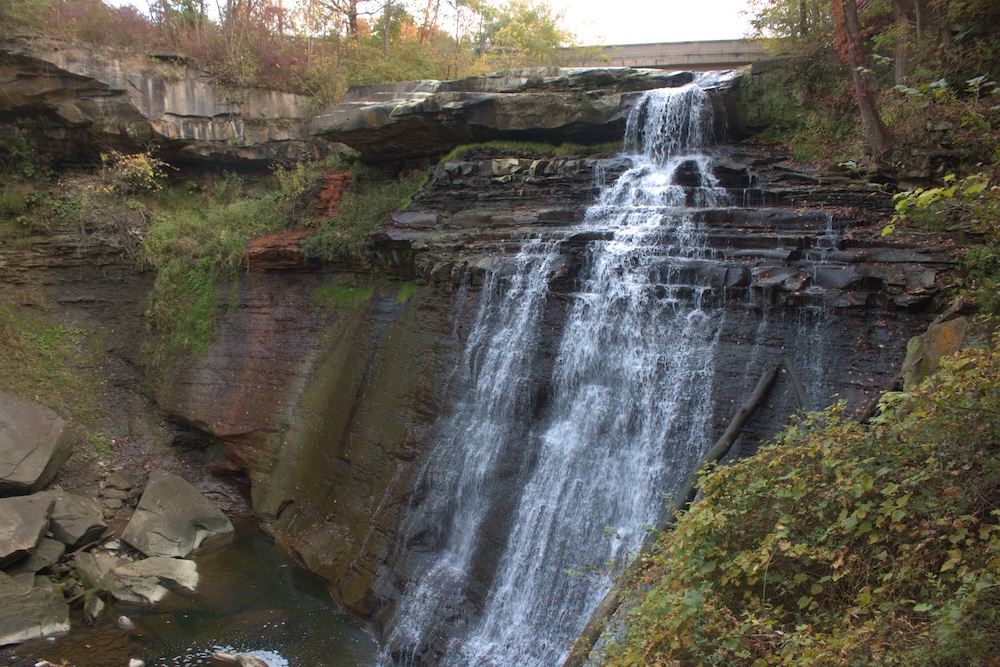
Getting to Your Destination
If you live nearby a national park, this may not apply to you. But for most travelers, it can be a trek to get to the entrance of some of these parks. As someone who lives in Wisconsin, I feel your pain. So let’s talk about how you’re going to get to the park you’re visiting.
Fly Into Larger Hubs and Drive
It’s so tempting to fly into the closest airport to your destination. But with the national parks, that often means a smaller, regional airport. These smaller airports have less connections, but high demands. So prices for plane tickets go up.
Expand your search. Are there other airports you could use?
For example, when I went to Glacier National Park, I used the Missoula Airport instead of flying into Kalispell. While Missoula is still a small airport, I found some better deals. Likewise, for Joshua Tree National Park, the nearest airport is Palm Springs. But, if you’re willing to add a little driving, you could fly into Los Angeles or Las Vegas. Both of these airports will have significantly more connections and likely cheaper fares.
Don’t Forget About Local, Regional Airports
Don’t forget to look at nearby regional airports, especially if you’re looking to fly into a major hub.
For example, I wanted to fly to Colorado. Specifically, I was looking to fly into Denver. I live in eastern Wisconsin and typically fly out of Milwaukee or Chicago, depending on what I can find for deals. My dates for my trip to Colorado were locked in, but flights were outrageous (admittedly my outbound flight was on Labor Day weekend). Trying to find flights that were less than $600 was impossible and I was frustrated.
On a whim, I decided to look at flying out of Green Bay where there were flights for $400, but I got a notice that I could fly from Appleton (another small airport located 30 minutes from Green Bay) for $300. I was shocked. Could that possibly be true? Yep! Allegiant, a low cost airline, had cheap, direct flights that fit the times and dates I needed perfectly. And it was half of the cost of flying out of Chicago (even after I paid for my baggage fees on the budget airline).
It’s very rare that I can find that good of a deal out a small regional airport, but it’s a good reminder to check. You never know what you might find.
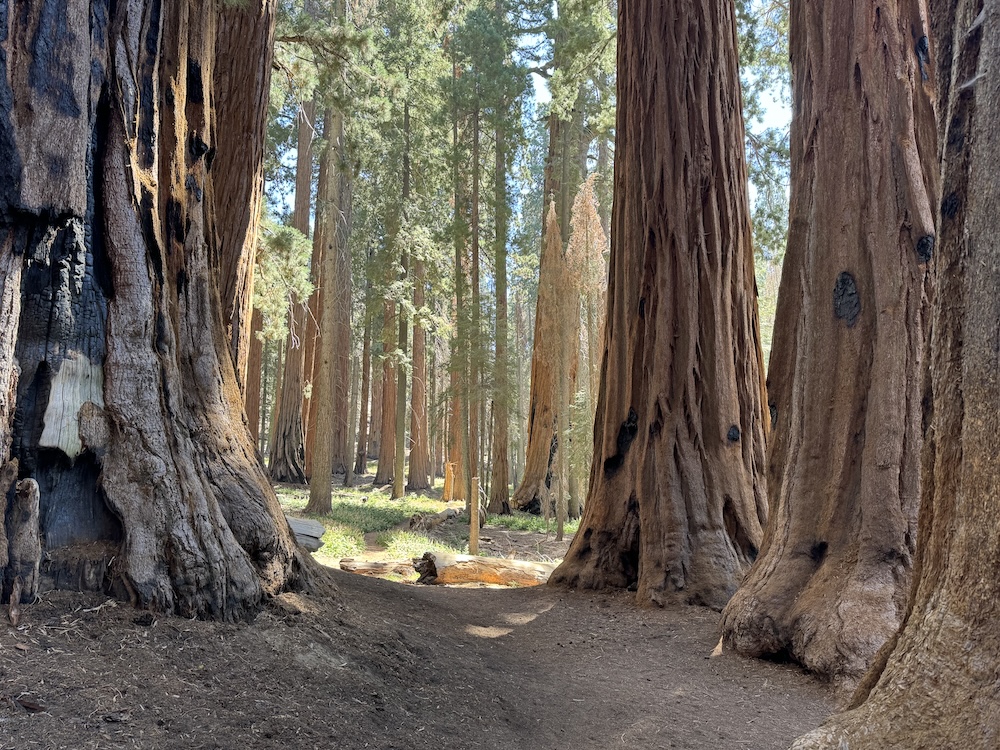
Can You Drive Yourself?
This isn’t an option for everyone, but I have to mention it. While it is true that so many of the United States National Parks are located in the western United States, you’ll find a handful dotting the rest of the country. Look at what is nearby. Sure, they may not be as exciting as visiting Rocky Mountain National Park or something that looks entirely different from home, but see what is available to you.
I live in Wisconsin, which is a state with no national parks. However, I was able to drive to a handful of them. It was a three hour drive to Indiana Dunes (which admittedly doesn’t look much different to where I live in Wisconsin). It was eight hours to Mammoth Cave National Park (which I combined with Indiana Dunes to make one big road trip).
Then we come to the big one. My mom and I visited Badlands and Wind Cave National Parks on a trip to southwestern South Dakota. It’s a long drive from Wisconsin (nearly 13 hours from Lake Michigan where we live) and added nearly a full 24 hours of driving to our trip. However, once we factored in flights and a rental car, it was so much more cost effective to drive ourselves. Plus, we didn’t add that much time (because there are no direct flights from Wisconsin to Rapid City, SD).
Let’s look at this further.
If you’re visiting southwestern South Dakota, you’ll likely use Rapid City Airport if you’re flying. This is a small regional airport so flights are limited. In fact, I can’t get a direct flight from any of my airports (including major hubs like Chicago O’hare).
So, if I were to fly, I’d need to budget time. It’s two hours to get to the airport (once I account for traffic), plus I have to be at the airport two hours early, plus the actual flight time which is about 6 hours including the layover. I’m at 10 hours of travel time even if fly. At the time, the flights cost about $450 per person. For two people it was $900 plus the cost of the rental car. The crazy thing is that flying would have only saved us 3 to 4 hours total driving. For us, it was a no brainer to save the money and drive ourselves.
Just keep in mind, for those long 12+ hour drives, you may need to add a little more to your budget. You’ll likely need to break up the drive somewhere. Even with paying for a hotel, you’ll still come out ahead.

Getting Around
Now we need to actually get around the national parks. While there are a handful of parks that you can visit without a rental car, these are far and few between.
Rental Cars
Unless you are driving your own car to the national parks, you’ll need a rental car. My advice here is to shop around and I don’t just mean different companies. Experiment with different pick up and drop off points. While it’s super convenient to pick up and drop off your rental car at an airport, do you have other options?
If you’re in Las Vegas, you could pick a rental car up from the airport, but many rental car agencies have branches within the city of Las Vegas. These branches may take a little effort to get to (either a city bus or an Uber), but you’ll avoid the inevitable fee that comes with picking up and dropping off at an airport.
While it wasn’t a trip solely focused on national parks, my mom and I saved almost $100 on our East Coast Road Trip by dropping our rental car in the city of Savannah rather than the airport. Yes, we had to then pay for an Uber to the airport, but it still ended up being cheaper.
Keeping in the same theme, try and make your trip a loop. If you do a loop, you’ll start and end your journey in the same city, meaning you can pick up and drop off your car at the same location, saving a sometimes monstrous one way rental fee. This isn’t always an option depending on the trip you take, but experiment with your route.
Pay Attention to Gas
I’ve already mentioned that many national parks are located in remote areas. Because of the remoteness, gas is limited. And because gas is limited, you can expect to see some of the highest gas prices you’ve ever seen. So if you pass by a larger city, stop to top off your gas tank before entering the national park.
The GasBuddy app can really help with this. While traveling, I will look ahead to see what gas prices are and plan my trip around getting the best deal on gas. Sometimes that means I stop and put in gas when I only have a half tank, but it’s what is necessary.
Luckily (unluckily?) I have plenty of examples on why it’s so important to plan your gas stops.
On my trip to the Grand Canyon, we were running low on gas so we had to pay for gas in Tusayan, AZ. At the time it was $4.39 per gallon, the most expensive gas I’d ever purchased at the time. Luckily, I looked ahead and saw that we’d be passing through the small town of Cameron which had cheaper gas. We put in just enough gas to get us to Cameron where gas was almost a full $1 cheaper per gallon.
In California, I needed to drive from Joshua Tree National Park to Las Vegas. We filled up with gas in Twentynine Palms and were thankful we did. We passed hardly any gas stations on our drive to Las Vegas. Notably though, we passed one gas station that was charging $7.59 per gallon. They were the only option for gas and they knew it. Also in California, the Stovepipe Wells of Death Valley National Park area has a gas station, but they also know that they are the only option. Gas was over $7 per gallon, but thankfully we had enough gas that we didn’t have to use that.
There are of course more examples, but my point is that it’s important to pay attention to your gas tank and what will be available to you on your trip.
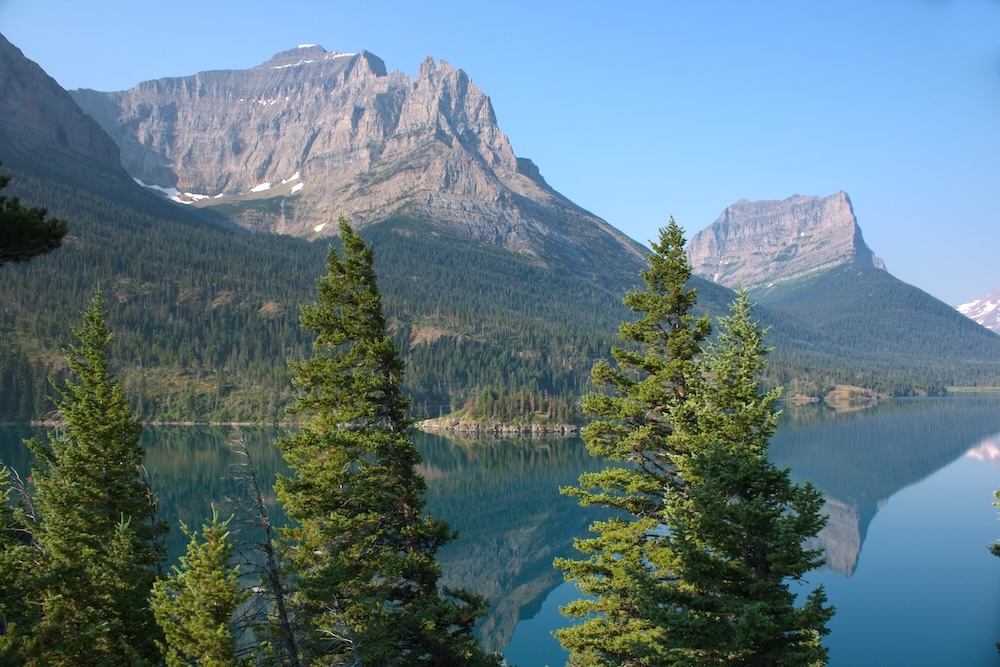
Hotels and Accommodation
I’ve already mentioned that this post focuses more on travelers who want a basic level of comfort, so we’re going to talk about hotels. Of course, if you’re truly going budget, camping is the way to go. But I like a little bit of comfort and that requires a bed and a shower.
Stay a Bit Further Away
We always want to stay at a hotel that’s close to our destination. Hotels know this and the price their properties accordingly. Sometimes, you need to think outside of the box. Is there a place you could stay that’s nearby enough. That is, maybe you add an extra hour of driving each day and you find some significantly cheaper options.
For my trip to Glacier National Park, hotels were outrageously expensive. Hotels on the eastern side of the park, near Many Glacier, were either sold out or $400 per night. Not wanting to pay that price, we expanded our search. The small town of Cutbank, MT was close enough for us. It added two hours of driving (one hour to the park and one hour from the park each day), but the hotel cost $150 per night. So, two nights at Many Glacier was $800 and Cut Bank was $300. That’s some serious savings!
Stay in the Park
I don’t often book hotels inside the national parks. Often, I find them expensive and difficult to book as they fill up quickly, but there are exceptions to the rule. Some national parks are isolated and there are no hotels close by. In this instance, it may make sense to stay in the park.
For example, on my trip to Death Valley National Park, my mom and I spent the night in Stovepipe Wells, a hotel located within the national park. While it was a bit more than I would have liked to pay for a hotel, I didn’t find it any more outrageous than other hotels in the United States.
In fact, that hotel inside the park ended up being cheaper than the airport hotel we stayed at in Las Vegas. Instead of staying inside the park, we could have saved a few dollars staying at a hotel outside of the park. However, when you combine the cost savings with the cost of gas, as well as the time it takes to get in and out of the park, the savings were moot. We stayed at Stovepipe Wells.
Look at your options thoroughly before deciding which hotel is the best option for you.
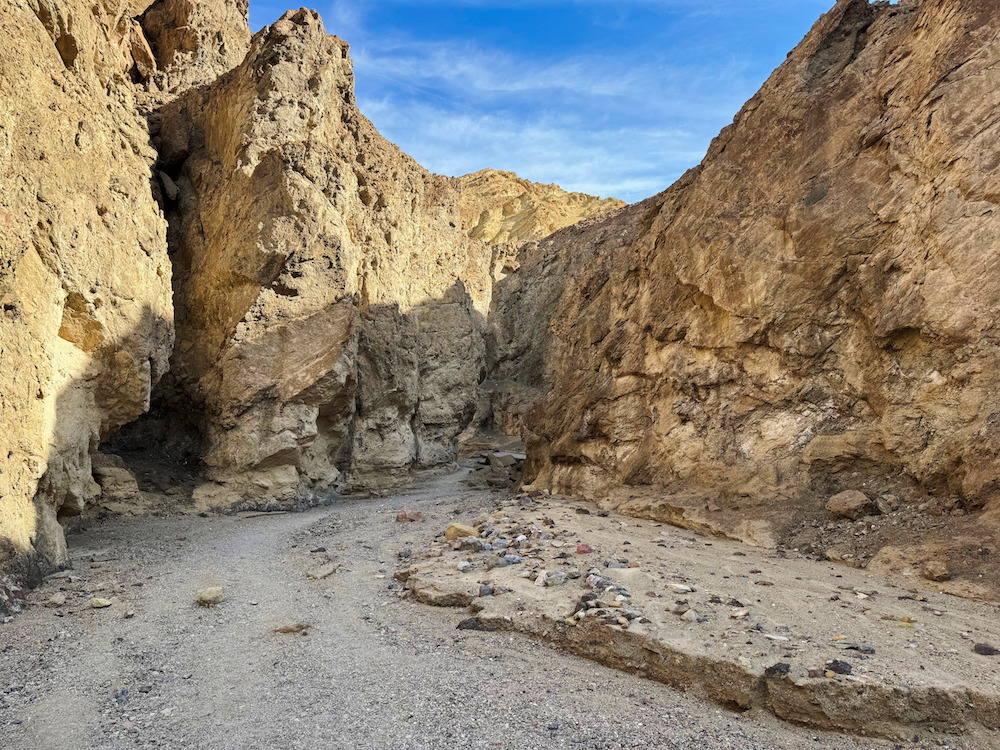
Food
You’ll have to eat at some point on your trip, so it’s best to think about this early in your planning.
Pack Snacks from Home
I always travel with snacks. It doesn’t matter if I’m traveling through national parks or through Paris. I will always pack at least one snack in my day bag. But, I think with the national parks, it’s even more important to be prepared with snacks.
In the national parks, you’re out in wilderness and supplies are limited. While you may be able to find some snacks for sale at a visitor center, they’ll likely be limited and overpriced. So, before you drive into a park, make sure you have enough to keep you going. Not only does snacks help to avoid hanger situations (more on this shortly), but by packing food with you, you’ll save on gas because you don’t have to leave the park to go out for a meal.
Bring Your Own Lunch
While my food in national parks typically consists of granola bars, fruit snacks, and trail mix, I have brought my own food with me. Stop at a Subway and bring in some sandwiches to help you to deal with hunger if you’re going to be spending a very long day at the park.
Save Your Leftovers
Restaurants in the United States have huge portions. I almost always have leftovers when I go out to eat, so I’ve started taking advantage of that fact. I pack a small insulated bag and take the leftovers with me. Most hotel rooms that I stay in have a fridge and a microwave, so I can heat up leftovers. That’s two meals for the price of one.
My key here is to make sure you have an insulated bag, especially if you are traveling through warmer climates. There was no way my leftovers would have survived my drive through Colorado had I not been able to keep them at least a little cool.
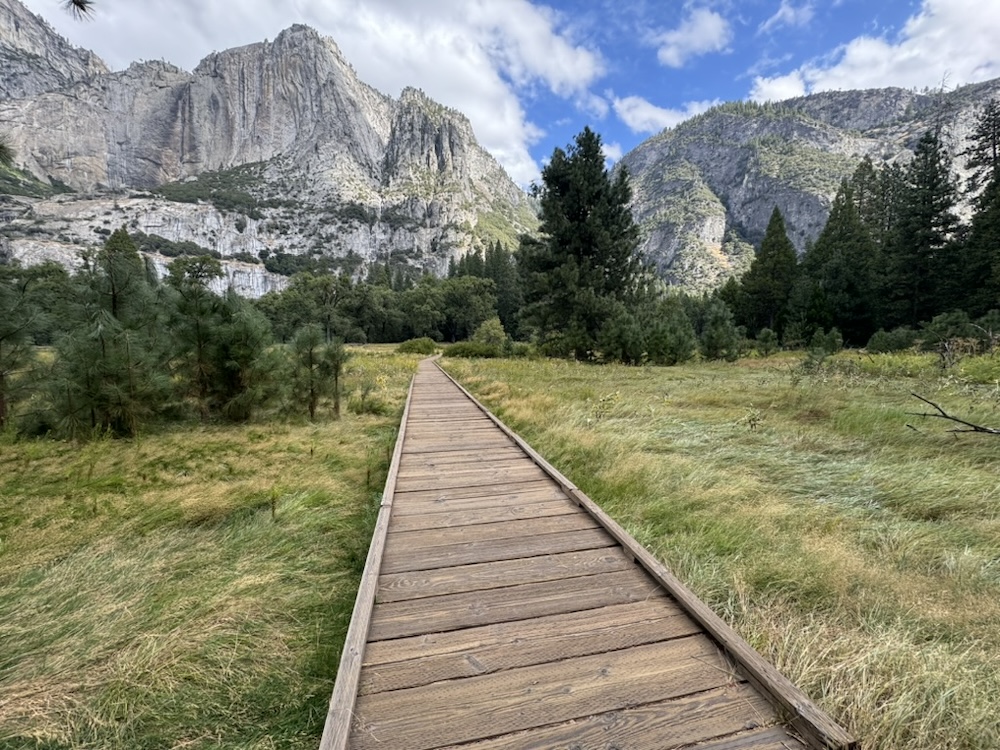
Plan Ahead (A Hanger Warning)
If you’re planning a long day at the park, and especially if you plan to spend the night in a national park, make sure you are aware of the food situation. I thought I was prepared when my mom and I spent the night in Death Valley at Stovepipe Wells, but I was wrong and hanger reared its ugly head.
Prior to our trip to Death Valley, I looked online to see what the food situation would be. Yes there was a hotel, but would be able to find adequate, decently priced food or would we need to bring it in ourselves? On the website, I found the menu for the restaurant in Stovepipe Wells and saw some reasonably priced sandwiches. I thought we were good. We were not. Had I done some more digging, I would have learned that the menu was not accurate and Stovepipe Wells was buffet only (at least at the time we visited).
So instead of a reasonably priced burger, it was $25.99 per adult for the dinner buffet. My mom and I both thought that was outrageous for a buffet option (since both of us typically have leftovers whenever we stop for dinner), so we immediately tried to figure out something else. The problem was, there wasn’t much else. In the end, we went to the general store across the street and bought a sandwich (which was so overpriced!) to share and combined that with snacks we had packed for the trip. Needless to say there was some serious hanger that night.
But we survived and I’m able to take a more comical approach about it. That night, I was not happy and it’s now my warning to other travelers. Make sure you are aware of the food situation. Had we known it was going to cost over $60 for the two of us for a buffet dinner (once tax and tip were included), we would have stopped to pick up some subs to bring in with us.
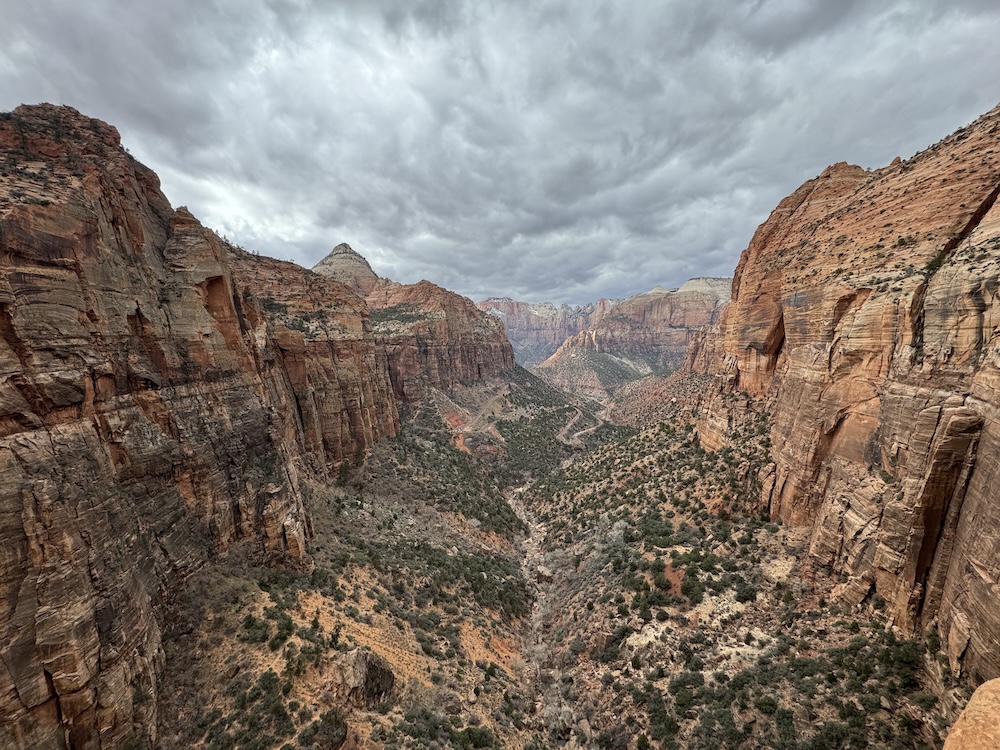
Miscellaneous
And lastly, I have a few more tips that just don’t fit into any of the other categories.
America the Beautiful Pass
Many, but not all, national parks in the United States have an entrance fee. This fee varies by park, but expect to pay $25 to $35 per national park you visit. So, if you plan to visit multiple national parks on your itinerary, it’s worth looking into an annual pass. The most common is the America the Beautiful pass. It’s $80 and is valid for one year after purchase.
So, let’s say you were following my 10 Days in Utah (+ Grand Canyon) Itinerary. On this road trip, you’d visit six national parks. If you were to pay the entrance fee at each park, you’d spend the following:
- Grand Canyon National Park: $35
- Arches National Park: $30
- Canyonlands National Park: $30
- Capitol Reef National Park: $20
- Bryce Canyon National Park: $35
- Zion National Park: $35
- Total: $185
In this instance, it’s a no brainer to pick up the America the Beautiful Pass. You’ll save over $100 and still have 11 months of free entry to national parks across the United States.
Here’s a less extreme example based on my 10 Days in Colorado Itinerary.
- Great Sand Dunes National Park: $30
- Mesa Verde National Park: $25
- Black Canyon of the Gunnison National Park: $30
- Rocky Mountain National Park: $30
- Total: $105, which is still a savings, but less so.
And an even less extreme example based off my seven days in California spent visiting Death Valley and Joshua Tree National Parks and Red Rock Canyon National Conservation Area in Nevada.
- Death Valley National Park: $30
- Joshua Tree National Park: $30
- Red Rock Canyon: $20 ** Note that this is not a traditional national park, but the entrance was still covered by my America the Beautiful Pass.
- Total: $80
In this instance, we break even. Personally, I’d buy the America the Beautiful Pass. If anything came up in the next year, I was already covered.
But, it may not always make sense to to purchase the pass. On my road trip from Washington DC to Savannah, GA, I visited three national parks.
- Shenandoah National Park: $30
- New River Gorge National Park: Free
- Congaree National Park: Free
- Total: $30
In this instance, the pass did not pay for itself. If this was your only visit to US National Parks for the year, it doesn’t make sense to purchase the pass. But, in the year I had my pass, I more than made up for it. I had used it in Colorado, my trip from Washington DC to Savannah, GA, New Mexico and Texas, and Arizona. The pass more than paid for itself.
My point is that it’s important to do your research and find out if it makes sense to get an annual pass. Don’t just blindly assume it will. Think about the national parks you’ll be visiting on this trip. If your entrance fees total less than $80, consider if you will visit more parks in next 12 months. If the answer is yes, the pass may be worth it.
For more information about finding out which parks are covered, visit the NPS website.
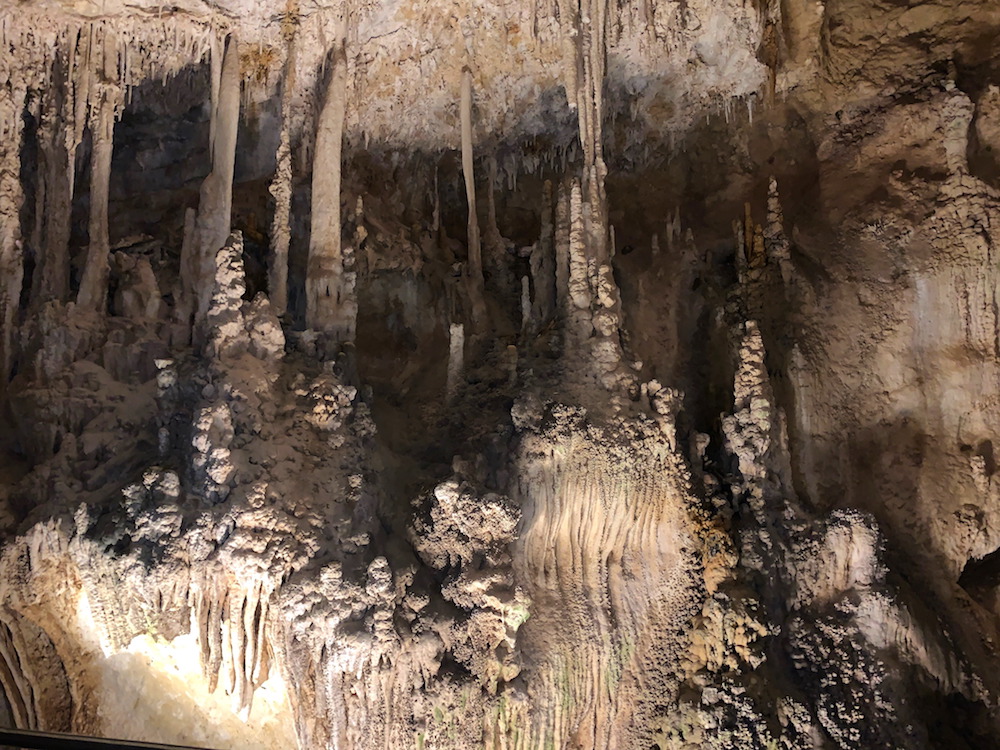
Reservations
Yes, I am including timed entries and reservations in a post about budgeting. Why? Because if you don’t have a timed entry for certain national parks, you will be turned away. If you’re turned away, you’ve just spent a lot of money to not visit the park you came to see and that’s a huge bummer.
There are timed entry reservations required at many of the most visited nationals parks. And some parks, such as Zion National Park, require you to have a reservation for particular hikes.
It can be annoying to plan and make these reservations, but many of these reservations are only $2. That $2 will not break the bank. Considering that the alternative is not visiting the park, just spend the $2 and make the reservation.
Consider Everything – Not Just One Aspect
My biggest pet peeve when people talk about budget travel is how so often it’s just a huge focus on how to get cheap plane tickets. Flights are just one aspect of your budget. If you want a trip on a budget, you need to look at more than just your flights or just your hotels. Look at everything together.
For example, my dad and I planned a trip to Montana to visit Glacier National Park. The closest airport is Kalispell and there are a handful of direct flights from Chicago (where we’d likely be flying from). I did a little more digging and found that we were able to fly into Missoula for a few dollars cheaper.
On the surface, it seemed like it wouldn’t make a difference where we flew in, so wouldn’t it make sense to save the extra driving time and just fly into Kalispell? I then did a quick search on rental cars. Rental cars from the Kalispell airport were nearly twice the cost of renting from the Missoula airport. So while we had to add some extra driving time onto our itinerary, we saved nearly $300.
If you’re concerned about your budget, make sure to consider all aspects of your trip including flights, rental cars, hotels, and activities.
Final Thoughts
Can it be expensive to visit national parks across the United States? Absolutely. In general, I find it more expensive to travel in the United States than most other places. But, that doesn’t mean you need to sacrifice your dreams of visiting US National Parks. You just have to be a little creative and flexible.
Continue Your Adventure
US National Parks: Start planning your national park vacation with my US National Park Travel Guide. You’ll find information about each park, photos, itineraries, budget tips, advice for non-hikers, tips for the best scenic drives, and more. Plus, don’t forget to book your timed entry reservations in advance!

thanks that information was a great help